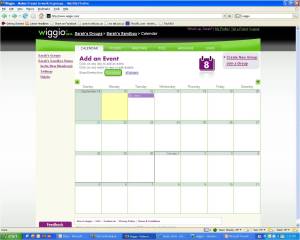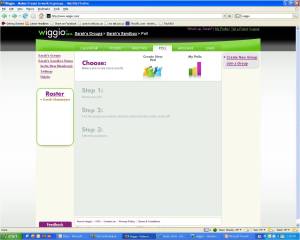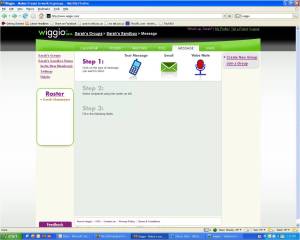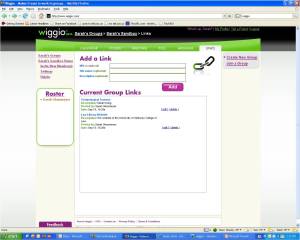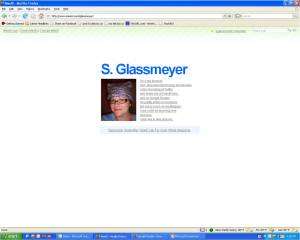As you know, Gentle Reader, I have an ongoing quest to find an alternative to the Wexis Course Management Software options of TWEN and Web Course. (This ongoing quest is not to be confused with my ongoing quest to find a decent bagel in Central Kentucky or my ongoing quest to find a pair of high heels that I can walk in or even my ongoing quest to get a decent haircut. But I digress…) Another contender has been released today – Wiggio.
This was designed for intra-student collaboration, but it has just about all the basics of a course management system – calendars, document sharing, polls, emails (and text and voice messages), etc. There is no message board, but there is a feature very similar to the “Facebook Wall and Newsfeed” that shows all the action taken on the site as well as allows for participants to post notes. Also from what I can tell, the sites are private and only open to registered participants….but I can’t see if there’s a way I can limit who joins the groups. That may be a problem.
Here’s some screen shots:
Above is the front page to the group with the newsfeed/wall combo.
Calendar feature
Document sharing.
Conduct a poll.
Sending a message. Note that you have the option of sending an e-mail, text message or voice message. In the “meeting” option, which I don’t have a screen shot of, you can pick conference call or chat room, which appear to be on the site itself.
And,finally, a place to post relevant links.
If not a course management system, librarians may find wiggio useful in organizing committee work or other project planning.
As part of the blog post that pointed me towards wiggio, it mentioned Popego as another “collaboration company”. I got all the way through the registration process before I realized that it’s basically another aggregation of services site like MeeId. There are some differences, but that’s basically what it is. Here’s mine.
In the course of trying to find that Webware blog post so that I could write this blog post, it appears that google apps has an educational suite that allows educational institutions to outsource much of their IT to google for a discounted rate. At my level, by which I mean I have no say in any upper level IT decisions on my campus, this knowledge does nothing for me. But I thought someone may be interested, so I thought I’d share.
Filed under: course management software | Tagged: course management software | 1 Comment »




